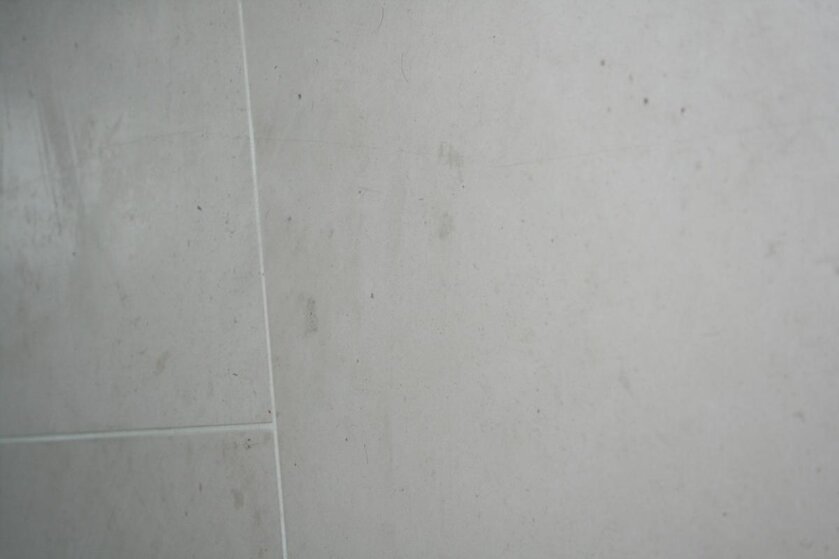J
jasonh15
Hi
We have a problem with linear cracks in a newly laid limestone tiled floor.
The screed substrate at around 65-70mm thickness was laid by the builder onto the foundations, then an extra thick layer of insulation - required by building control due to extra glass in the room. The screed has wet under floor heating in it.
Then limestones tiles were laid around 4-6 weeks (he says 6 weeks but I think it more likely 4 at most) later onto flexible adhesive provided by the tile supplier.
The area is approximately 10m long and 7m wide going down to 5m.
The UFH was not ramped up and down by the builder before he laid the tiles but it was gradually eased up after the tiles were laid over a period of about a month. The work was done last summer.
The cracks started to appear as the weather got colder in the winter and the UFH was on most of the time at its max temperature. They travel in both directions and span multiple tiles, They start as hairline cracks but the limestone does flake away and the crack opens up becoming more obvious.
One interesting thing is that the cracks only appear in about 2/3 of the floor area. In about 1/3 of the floor area where a different flexible adhesive was used, because the amount supplied by the tile supplier ran out, there are no cracks whatsoever.
The builder is blaming the tile suppliers adhesive, because he says it is to be expected that the screed will crack with UFH but the flexible adhesive should take the stresses of the cracks.
However the tile supplier is saying the screed must have cracked and no flexible adhesive can prevent cracking of the tile if there is significant cracking of the screed.
The builder had attempted to take up a line of cracked tiles, to inspect for damage to the screed, but had to abandon it because of the risk of damage to the screed and UFH and the surrouding good tiles. He also though that the bit of adhesive he took up, which is said he will get analysed, seems very rigid with no feeling of elasticity too it.
Any thought on this would be much appreciated?
Would flexible adhesive that had set feel rigid or should there is a "flexible" feel to it?
It is possible to get adhseive chemically analysed to establish whether it is what is was expected to be?
With UFH should we expect screed to crack and if so should should th3e flexible adhseive handle this?
Should it be possible to perform spot repairs on the tiles/screed/adhesive without damaging the rest of the floor - is my builder just using the wrong tools?
We have a problem with linear cracks in a newly laid limestone tiled floor.
The screed substrate at around 65-70mm thickness was laid by the builder onto the foundations, then an extra thick layer of insulation - required by building control due to extra glass in the room. The screed has wet under floor heating in it.
Then limestones tiles were laid around 4-6 weeks (he says 6 weeks but I think it more likely 4 at most) later onto flexible adhesive provided by the tile supplier.
The area is approximately 10m long and 7m wide going down to 5m.
The UFH was not ramped up and down by the builder before he laid the tiles but it was gradually eased up after the tiles were laid over a period of about a month. The work was done last summer.
The cracks started to appear as the weather got colder in the winter and the UFH was on most of the time at its max temperature. They travel in both directions and span multiple tiles, They start as hairline cracks but the limestone does flake away and the crack opens up becoming more obvious.
One interesting thing is that the cracks only appear in about 2/3 of the floor area. In about 1/3 of the floor area where a different flexible adhesive was used, because the amount supplied by the tile supplier ran out, there are no cracks whatsoever.
The builder is blaming the tile suppliers adhesive, because he says it is to be expected that the screed will crack with UFH but the flexible adhesive should take the stresses of the cracks.
However the tile supplier is saying the screed must have cracked and no flexible adhesive can prevent cracking of the tile if there is significant cracking of the screed.
The builder had attempted to take up a line of cracked tiles, to inspect for damage to the screed, but had to abandon it because of the risk of damage to the screed and UFH and the surrouding good tiles. He also though that the bit of adhesive he took up, which is said he will get analysed, seems very rigid with no feeling of elasticity too it.
Any thought on this would be much appreciated?
Would flexible adhesive that had set feel rigid or should there is a "flexible" feel to it?
It is possible to get adhseive chemically analysed to establish whether it is what is was expected to be?
With UFH should we expect screed to crack and if so should should th3e flexible adhseive handle this?
Should it be possible to perform spot repairs on the tiles/screed/adhesive without damaging the rest of the floor - is my builder just using the wrong tools?

